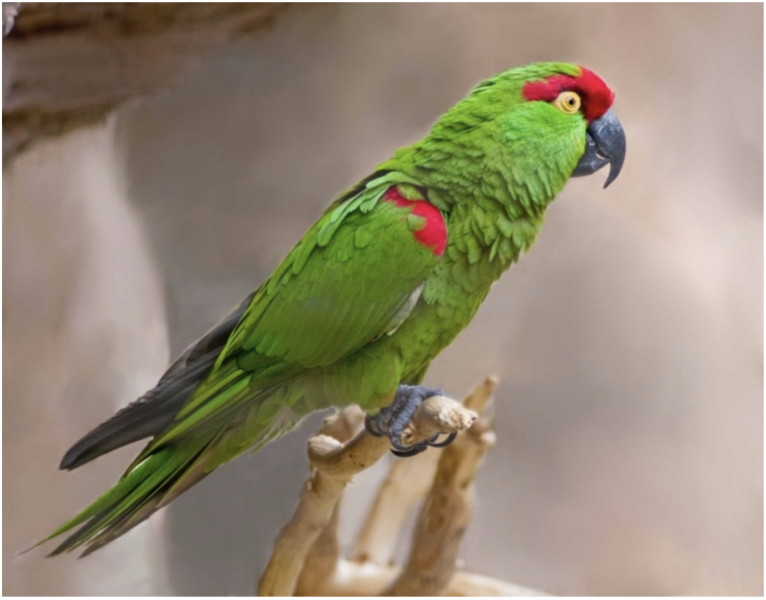The Ancient Parrots Next Door
October 30, 2023

In 2018, while sorting through a bone collection recovered during a New Mexico archaeological dig in the 1950s, John Moretti found a lone ankle bone belonging to a thick-billed parrot.
The bone stuck out among the deer and rabbit remains. And it set Moretti, a doctoral student in the Department of Earth and Planetary Sciences, on a journey to figure out how it got there.
“Once I realized that nobody had already described this, I really thought there was a story there,” he said.
Moretti discovered that the parrot bone, along with others found in the region, may have been captured locally. This challenged the assumption that all parrot remains found in American Southwest archaeological sites were imports from Mexico. The findings were published in 2022 in The Wilson Journal of Ornithology.
Parrot bones are found at southwestern archaeological sites dating back to the 7th or 8th centuries. But the animals usually have been assumed to be imports, according to Moretti.
There’s good reason for that. Scarlet macaws — the most commonly found variety — live in rainforests and savannahs, which are not part of the local landscape. And researchers have discovered the remains of ancient parrot breeding facilities in Mexico that point to a thriving parrot trade.
But thick-billed parrots have a different lifestyle and dwell only in mountainous, old-growth pine forests. And although they no longer live in the United States due to habitat loss, that wasn’t the case a relatively short time ago. As recently as the 1930s, their range stretched from Arizona and New Mexico to northern Mexico, where they live today.
With that in mind, Moretti decided to investigate the connection between pine forests in New Mexico and Arizona and the remains found at archaeological sites. He found that of the 10 sites with positively identified thick-billed parrot remains, all contained buildings made of pine timber. For half the sites, suitable pine forests were within 7 miles of the settlement.
The results suggest that the thick-billed parrots could have been captured locally during timber harvests — and not necessarily imported from afar.
“This paper makes the hypothesis that these [parrots] were not trade items,” Moretti said. “They were animals living in this region that were caught and captured and brought home.”
The research was funded by the Museum of Texas Tech University, where Moretti earned a master’s degree.
Back to the Newsletter